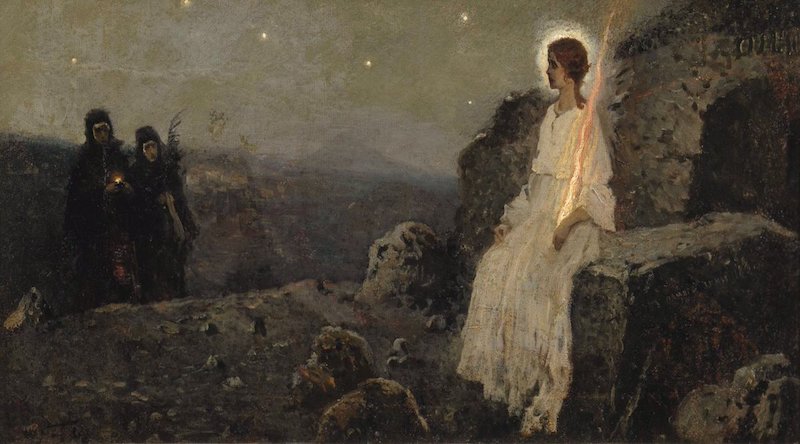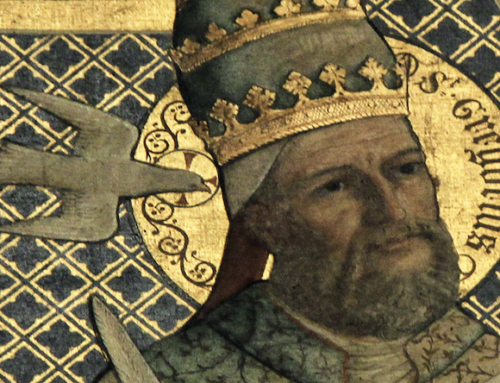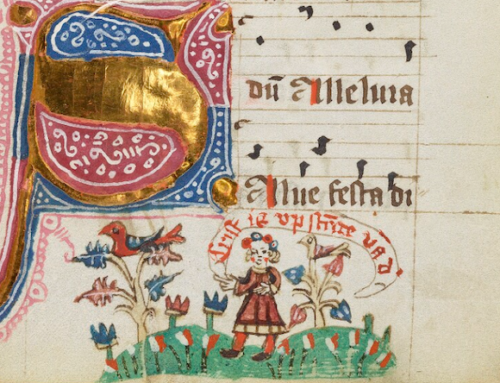When Mary Magdalene saw that Christ’s tomb was empty, she couldn’t wait to tell Peter and John, so she ran (John 20:2). When these two heard about what Mary Magdalene had seen, they ran (John 20:4). John the Evangelist even makes note of who ran faster and arrived at the tomb first!
What should we make of all this hurrying about? Perhaps the Evangelist could not think of a better word to use, so he chose at random the verb “to run”… or maybe Peter and John just wanted to go on an early morning jog. Not quite. Every single word of Scripture is inspired by the Holy Spirit and nothing is included apart from God willing it. This simple verb is neither absent-minded nor a mistake.
The verb “to run” only appears in the Gospels a handful of times, and it always conveys a sense of passionate urgency, that something striking is happening: The Gerasene demoniac ran to worship Jesus (Mark 5:6); in the parable of the prodigal son, the merciful father ran to embrace his repentant son (Luke 15:20). The Gospels of Matthew, Luke, and John all describe the first witnesses of the resurrection as running (Matt 28:8; Luke 24:12). Excitement impelled the disciples to run on Easter Sunday.
But who runs like that? Children. Adults run for exercise, but children run all the time. Out of excitement, out of vehemence of emotion, a child can’t help but show the intensity of the heart.
The accelerated bodily motion of the Apostles reflects something going on within their hearts—a childlike excitement in the presence of an awe-inducing mystery. The news of the empty tomb awoke in the Apostles’ spirits an amazement and an urgency that they did not know on the mournful Holy Saturday. This led to an eagerness that overflowed into running as fast as they could. On Easter Sunday, the Apostles ran to the empty tomb, but soon their zeal would lead them to the ends of the earth (Ps 19:4).
Yet despite their excitement, the four Evangelists have refrained from saying a single word about the resurrection itself. Faced with the mystery of a man being resurrected from the dead, they were struck speechless. The Gospels do not attempt to picture the moment when Christ’s glorious soul was reunited with his bruised, beaten, and bloodied body… the moment when his lifeless body roared back to life. The Evangelists—possessing the inspiration and anointing of the Holy Spirit—declined to describe this most sacred instant in salvation history. In accordance with the plan of God, they preferred to let it remain hidden in mystery.
The resurrection was something entirely new, the likes of which “no eye has seen, nor ear heard, nor the heart of man conceived” (1 Cor 2:9). The resurrection of Jesus Christ was no mere resuscitation to only die again later, like Lazarus. Death was never again to touch the Lord Jesus. His body and soul are never to be separated again. Christ has risen and is with us still.
Easter is far more glorious than baskets of colored eggs and suit-wearing-bunnies would have us believe. Those festivities are childish. The Apostles’ joy was childlike—more like the child who cannot grasp the immensity of the Grand Canyon, rather than one who grasps after eggs and candy in the grass.
The resurrection of Jesus Christ is the crowning mystery of the Incarnation, a truly awful mystery—in the true sense of awful, literally filling us with awe and wonder. The news of the resurrection filled the Apostles with excitement and left them speechless.
By baptism, Christians have been plunged into the death and resurrection of Christ (Rom 6:3-11). The awful mystery that made the apostles run and that struck the evangelists dumb is happening right now inside your soul by grace. When you ponder the resurrection on this Easter day, let your heart race to the empty tomb with the Apostles. Let your jaw hang loose and your lips quiver before the presence of the man raised from the dead.
Forget the eggs and the bunny.
Christus Resurrexit! Resurrexit Vere!
✠
Image: Mikhail Nesterov, The Empty Tomb (public domain)







